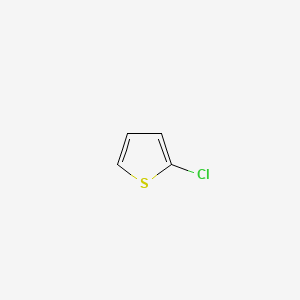Solve the root cause of diabetes! New therapy can effectively induce rapid regeneration of human β cells
-
Last Update: 2020-02-19
-
Source: Internet
-
Author: User
Search more information of high quality chemicals, good prices and reliable suppliers, visit
www.echemi.com
Wen Wei Wei Wei Diabetes can lead to serious complications such as heart disease, stroke, renal failure, blindness and amputation The disease affects 422 million people worldwide, and the incidence rate is increasing All of these are due to the insufficient number of functional islet beta cells producing insulin In type 1 diabetes, the immune system mistakenly attacks and causes β cell damage The lack of functional beta cells is also an important factor in type 2 diabetes, the most common type of diabetes Therefore, the development of drugs that can increase the number of healthy β cells is an important task of diabetes research Recently, researchers from the Yikan Medical College in Sinai mountain found that the combination of the two drugs can make human β cells proliferate at the highest rate in history without side effects Relevant results were published on Science Translational Medicine on February 12 [1] This discovery is an important progress in the history of diabetes treatment and is expected to solve the problem of diabetes from the root These two drugs are bispecific tyrosine phosphorylation regulated kinase 1a (DYRK1A) inhibitors and glucagon like peptide-1 (GLP-1) receptor agonists The latter includes widely used diabetes drugs, such as Victoza, ozempic, rybelsus of Novo Nordisk, truccity of Lilly, and bydureon of AstraZeneca GLP-1 receptor agonists play a role by stimulating the secretion of insulin by the remaining β cells Previous studies have shown that they can induce the replication of β cells in rodents, but they do not have the same effect in adult tissues In 2015, Dr Andrew Stewart, who led the study, demonstrated that harrine, an inhibitor of DYRK1A, can induce the proliferation of human β cells, but its proliferation rate is lower than the level of β cells required by diabetic patients In December 2018, Dr Stewart also published research in the Journal of cell metabolism to prove that the combination of DYRK1A inhibitor and another drug that inhibits the members of transforming growth factor - β (TGF - β) superfamily can enhance this effect, making β cells proliferate at a rate of 5% to 8% per day However, the study was eventually abandoned because it also led to unnecessary growth of other cells, with side effects This time, Stewart's team tried to use the DYRK1A inhibitor (hammine) in combination with GLP-1 receptor agonist, and found that they had synergistic effect, which could induce 5% to 6% of human β cell proliferation, and the total number of human β cells increased by 40% on average four days after administration In contrast, the effect of GLP-1 alone on the cells can be ignored, while harmine only induced about 2% of human β cell proliferation In addition, in type 2 diabetes, the combination of hammine and GLP-1 receptor agonist also enhanced the response of β cells to glucose In order to determine whether these experiments are equally effective in vivo, the researchers tested the effect of the combination in diabetic mice transplanted with human islets The results showed that compared with the mice treated with bydureon (GLP-1 receptor agonist) and harmine alone, the mice treated with the combination of GLP-1 receptor agonist had better effect on β cell proliferation, and their blood glucose level was close to the normal level In addition, no adverse events were observed in the 1-week mouse study The development of new methods of pancreatic β cell regeneration has been a hot topic in diabetes research Semma therapeutics, a biotechnology company derived from Harvard University, has recently successfully transformed undifferentiated pluripotent stem cells into functional beta cells By increasing the expression of transcription factors PDX1 and MafA, researchers at the University of Geneva have enabled non insulin producing alpha and gamma cells to secrete insulin A team at Stanford University used zinc, which has a strong affinity for zinc, to guide a renewable drug known as JNK inhibitor cc-401 into beta cells to help them replicate And Professor Stewart's team believes that their approach has the advantage of quickly using the popular GLP-1 diabetes drug They believe that the combination of any DYRK1A inhibitor with any GLP-1 receptor agonist (or DPP4 inhibitor that blocks the degradation of endogenous GLP-1) can significantly increase β cell proliferation Next, the team plans to further test the method by conducting long-term studies in animals, as well as determine whether the drug combination has any unexpected effects on other cells Dr Andrew Stewart said in a statement: "we are very excited about this new drug combination because for the first time in history, we can see that human β cells replicate fast enough to supplement the number of β cells in patients with diabetes." Courtney ackeifi, the first author of the paper, also said: "the combination of DYRK1A inhibitor and glp1r agonist can achieve the highest speed of human β cell replication, and it is achieved in a highly specific way This is an important development in the field of diabetes, because we may have found a way to convert a widely used class of diabetes drugs into effective human β cell regeneration therapy for various forms of diabetes "
This article is an English version of an article which is originally in the Chinese language on echemi.com and is provided for information purposes only.
This website makes no representation or warranty of any kind, either expressed or implied, as to the accuracy, completeness ownership or reliability of
the article or any translations thereof. If you have any concerns or complaints relating to the article, please send an email, providing a detailed
description of the concern or complaint, to
service@echemi.com. A staff member will contact you within 5 working days. Once verified, infringing content
will be removed immediately.




![trans-2-[4-(Trifluoromethyl)phenyl]vinylboronic acid](https://file.echemi.com/fileManage/upload/goodpicture/20210823/m20210823213511682.jpg)


